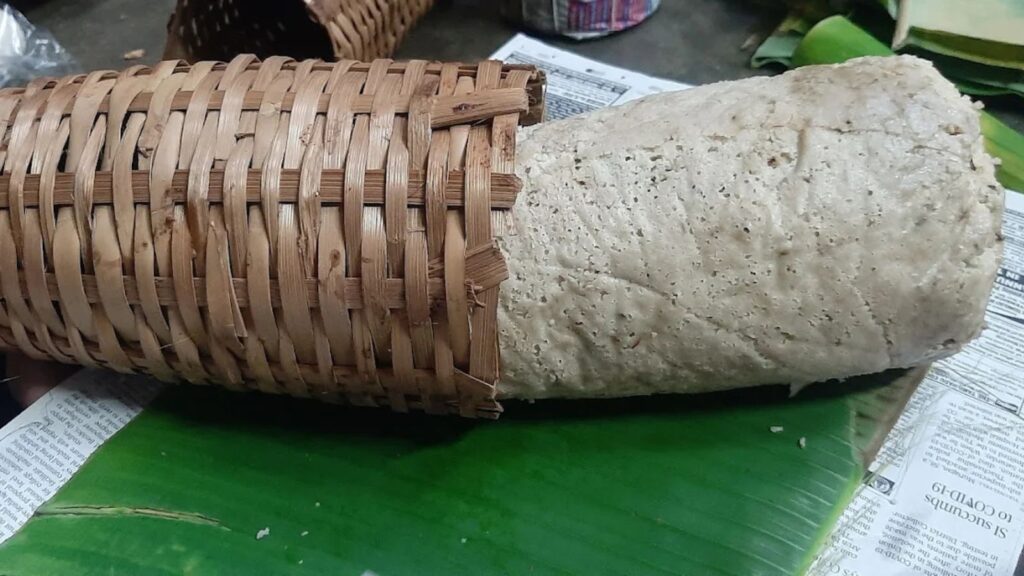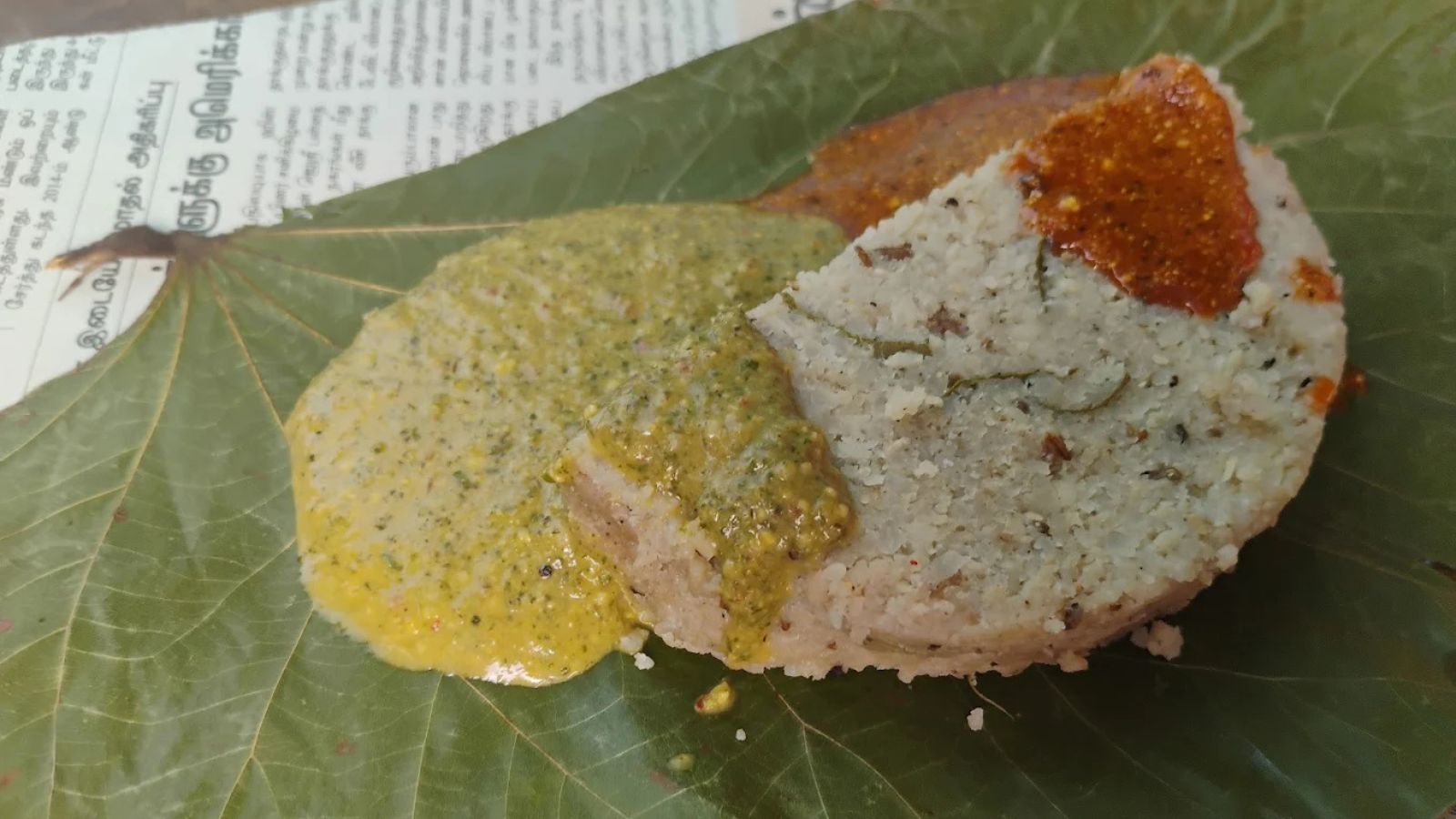The Kovil idli served at the Varadaraja Perumal Temple in Kanchipuram is steeped in ritual, flavor, and history. Unlike the soft, fluffy idlis found across South India, this temple version—also known as Kanchipuram idli—is larger, firmer, and richly spiced. It is made using coarsely ground rice and urad dal, with black pepper, cumin seeds, chopped ginger, asafoetida, curry leaves, and ghee. Fermentation is minimal or absent, and the batter is poured into bamboo baskets lined with layers of banana or mantharai (Bauhinia) leaves.
This idli is neivedyam—a sacred offering to Lord Varadaraja. Prepared by hereditary temple cooks in adherence to age-old agama traditions, it is made only in the temple kitchen and served to devotees as prasadam. Historical references to this idli date back to at least the 10th century during the reign of the Cholas, making it one of the oldest temple foods still prepared in its original form.

It is said that the combination of spices was chosen not only for flavor but also for their preservative and digestive properties, as the idli was meant to last through the day. For pilgrims, receiving this prasadam is both a culinary and spiritual blessing.
Image credits: Vignesh Panchapakesam, and Kannan S



